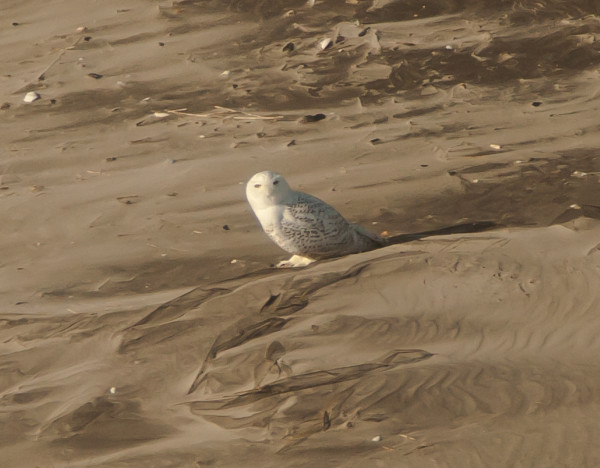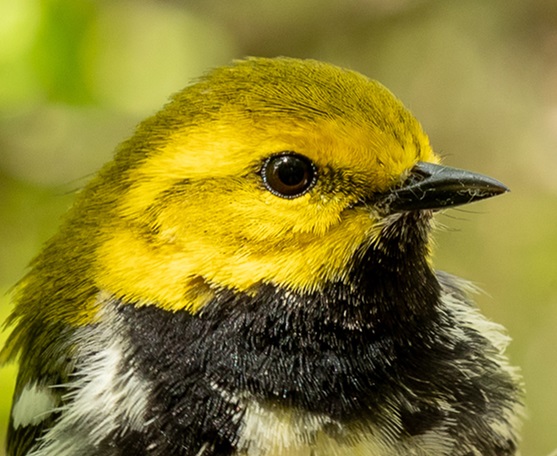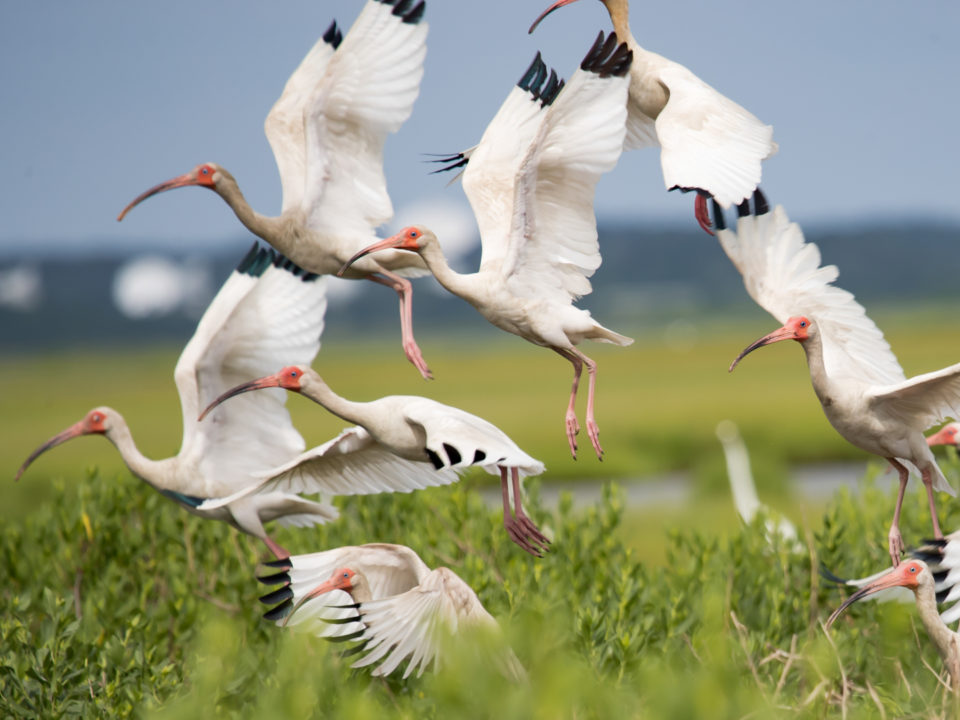Snowy Owls enjoy Virginia Beaches
Camellia – Benefit Rd – Chesapeake Dec 19
December 19, 2013
Botswana Research Projects – Vultures and Wild Dogs
December 24, 2013
The winter of 2013 will be remembered as a historic irruption year for snowy owls throughout northeastern North America. Birds are being reported in numbers not seen in a century or more. Such irruption events are triggered by productivity booms on arctic breeding grounds. Snowies are opportunistic breeders with the capability of producing large broods when food conditions allow. Hatch-year birds have yet to develop the hunting skills required to withstand arctic winters and move to easier hunting grounds within lower latitudes during the fall months. During irruption years the large numbers of young move south out of the arctic like a wave. In boom years like 2013 this wave can be like a tsunami.

Snowy owl on Hog Island, Virginia. Photo by Bryan Watts.
Snowy owls have arrived along the Virginia barrier islands. On 21 December, 2013 Mitchell Byrd and Bryan Watts from The Center for Conservation Biology flew a short flight to survey the birds using beach habitats. Flying below 100 feet the large white owls were relatively easy to detect from the air. The team detected 6 birds including 2 on south Assateague Island, 1 on north Wallops Island, 1 on Hog Island, 1 on Wreck Island, and 1 on Ship Shoal Island. Although birds had been reported earlier in the week on Fisherman Island none were present. Fresh tire tracks were present on the island prior to the survey.
All of the owls were using identical habitat. Birds were perched in wide expanses of low, unvegetated foredunes characteristic of piping and Wilson’s plover breeding habitat. Although primary and secondary dune habitat was searched, no birds were detected.
In addition to the snowy owls, other species of note were observed along the islands. Raptors included 14 bald eagles, 4 northern harriers, and 3 peregrine falcons on beaches. Waterfowl included 50,000+ snow geese and good flocks of Atlantic Brant in bays just behind islands. More than 20,000 dunlin were distributed among 7 high-tide roosts on beaches around major inlets.
Written by Bryan Watts | bdwatt@wm.edu | (757) 221-2247
December 23, 2013
Related posts
Two whimbrels, including an adult (foreground) that exhibits worn body plumage, especially along the scapular region, and a juvenile (background) with fresher plumage. CCB collaborated with eBird and used photographs like these to better understand differences in migration patterns between adults and juveniles at migratory stopover sites in the eastern United States. Photo credit: Macaulay Library (ML116488021)



